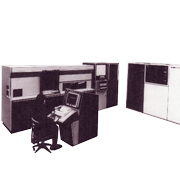The ASPET/71 was an OCR system released to the public in November 1971 that read English characters printed in documents. The system prompted a huge reaction from related industries because of its revolutionary recognition performance and high-speed reading of low-quality printed letters. The multiple similarity method and fuzzy logic, which were invented at this time, became the foundation of both character recognition and pattern recognition. These techniques had an enormous impact on later character recognition research and OCR products, and they play an important role even today. The development of the ASPET/71 began as part of an ultra-high-performance computer project by the Ministry of International Trade and Industry’s National Research Institutes. Eventually, the Electro-Technical Laboratory (today the National Institute of Advanced Industrial Science and Technology) and Tokyo Shibaura Denki (today Toshiba) co-developed and released the ASPET/70 in 1970 and the ASPET/71 in 1971.
The ASPET/71 used a paging format, in which it scanned the entire page in one pass, and was noteworthy for its fast read speeds of 200 A4 sheets per minute and 2,000 characters per second and for its highly accurate recognition of ordinary low-quality typewriter-printed characters. According to the published specifications, the system read the OCR-B font, but it used a method that, in principle, enabled omni-font reading of all fonts. The multiple similarity method was capable of attaining very high accuracies, but it required what was for the time large amounts of processing power. The developers used parallel analog computation technology to achieve high-speed processing despite this difficulty. Unfortunately, this technology was not stable enough for commercial products, and it was the first and last example of this design concept in an OCR system. With today’s parallel digital CPUs, of course, the multiple similarity method can be implemented with ease.
The basic specifications of the ASPET/71 were as follows:
- Read speeds: 2,000 characters per second, 200 sheets per minute (A4 document)
- Readable printed characters: JIS OCR-B (size I) letters, numbers, and symbols (48 characters) (support could be extended to include JIS katakana characters)
- Readable documents: up to A4,Number of readable characters: up to 4,000 characters per sheet
- Format limitations: Any format could be designed by loading the format-specification sheet into OCR system


